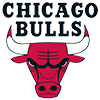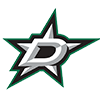The Nationals ace was lifted after just one inning during his most recent start due to a hamstring strain. Despite being one of the most commonly strained muscles, we don't normally associate hamstring injuries with pitchers. However, the lower leg muscles remain an integral part of pitch delivery.
Pitching mechanics are broken down into five different stages. It starts with the windup and progresses to the cocking phases and acceleration before ending with the follow-through. Energy is built up in the initial phases and is transferred throughout the body until it is released during the late-cocking and acceleration phases.
Scherzer's injury is on his right leg, meaning the involved leg is his plant or stance. As a result, the phases most impacted by the injury will be the initial phases when energy is being generated. As a pitcher begins his windup, his center of gravity is located above his stance leg. This positioning allows the pitcher to generate a maximum amount of momentum. As the pitch progresses and the pitcher reaches out with his stride leg, the hamstrings of the plant leg extend the hip and begin transferring energy from the legs and hip, and into the pelvis, torso, and ultimately the upper extremity. If the hamstring is limited due to injury, it can create an imbalance, causing the muscles of the shoulder and arm to assume a greater amount of stress. As a result, the pitcher can not only experience a dip in velocity but open
The Nationals ace was lifted after just one inning during his most recent start due to a hamstring strain. Despite being one of the most commonly strained muscles, we don't normally associate hamstring injuries with pitchers. However, the lower leg muscles remain an integral part of pitch delivery.
Pitching mechanics are broken down into five different stages. It starts with the windup and progresses to the cocking phases and acceleration before ending with the follow-through. Energy is built up in the initial phases and is transferred throughout the body until it is released during the late-cocking and acceleration phases.
Scherzer's injury is on his right leg, meaning the involved leg is his plant or stance. As a result, the phases most impacted by the injury will be the initial phases when energy is being generated. As a pitcher begins his windup, his center of gravity is located above his stance leg. This positioning allows the pitcher to generate a maximum amount of momentum. As the pitch progresses and the pitcher reaches out with his stride leg, the hamstrings of the plant leg extend the hip and begin transferring energy from the legs and hip, and into the pelvis, torso, and ultimately the upper extremity. If the hamstring is limited due to injury, it can create an imbalance, causing the muscles of the shoulder and arm to assume a greater amount of stress. As a result, the pitcher can not only experience a dip in velocity but open himself up to a more significant injury as well.
To further complicate the issue, hamstring injuries are notoriously fickle. Players often report an improvement in symptoms despite the fact the injured tissue has not healed completely. As a result, re-injury or aggravation are common. Scherzer has already dealt with the problem on two separate incidences this season. The right-hander is reporting an improvement in the area and plans on making his scheduled start on Tuesday against the Mets. However, fantasy players will want to scale back their expectations for the immediate future and keep a close eye on his effectiveness to see if the leg remains an issue.
The Mets right-hander has been placed on the injured list with one of my least favorite injury designations: inflammation. Inflammation is really more of a symptom than an injury diagnosis and identifying a specific location or tissue affected by the inflammation would be more insightful. Shoulder inflammation could be a myriad of things including an acute injury like a strain or a chronic, overuse injury like tendinitis. New York did not add much clarity to the situation either by failing to provide a more definitive timeline. For now, it appears he will miss at least two starts but don't be surprised if this lingers into September.
Check Swings
Yadier Molina and the Cardinals: It's been a rough go for anyone rostering a member of the Cardinals. The team has not played since July 29 due to a rash of COVID-19 cases amongst the team, including 10 players and seven staff members. The list of players to test positive includes All-Stars Molina and Paul DeJong. The team's upcoming series against the Pirates has already been postponed, meaning the Cardinals have played in just five games with 13 postponements.
Charlie Morton: The Rays starter was pulled in the third inning of Sunday's start with *drumroll* right shoulder inflammation. Cross your fingers that Tampa is more forthcoming with any testing that will inevitably performed on Morton's ailing shoulder. Morton has downplayed the severity of the issue, but consider him day-to-day for now.
Mike Moustakas: The Red have placed Moustakas on the 10-day IL as he works his way back from left quadriceps contusion. At first glance, a quad contusion may sound like a more of an inconvenience than an injury. However, the problem can be very painful and significantly limit the function of the muscle. Simple motions like knee extension (straightening the leg) can become difficult, and more complex movements like running or jumping can be nearly impossible to perform without eliciting pain. Cincinnati took a proactive approach with Moustakas' care, opting with the IL designation, and remain hopeful he will return when first eligible. Kyle Farmer and Christian Colon will platoon in the infield with Moustakas out. Neither carries much long-term fantasy value.
George Springer: The Astros slugger remains sidelined with a sore right wrist. The injury is reportedly muscle-related and has kept Springer off the field for three straight outings. He was available to pinch run, but the fact that Houston is limiting the amount of swinging he performs is a good sign the issue is far from resolved. Even if he does return to the lineup, the chances of the injury lingering remain.
Jeff Samardzija: Samardzija received the same diagnosis as Wacha and Morton, but the Giants at least indicated the injury involved his rotator cuff. San Francisco has stated he will not pitch for at least the next week. Assuming he's clear after that, the Giants will slowly build up his work load to prevent a recurrence. As a result, Samardzija is looking at a lengthy absence and should probably be sent to the waiver wire in all formats.
Corey Seager: The Dodgers infielder is listed as day-to-day with lower back discomfort. Unfortunately, this is another situation where a symptom is provided in place of an injury diagnosis. However, reports indicate that an MRI taken on the area came back clean, and Seager will continue to receive treatment. It seems likely this is a mild strain and not worth overreacting to just yet. Hopefully another day or two of rest will allow Seager to feel healthy enough to return to action.
Giancarlo Stanton: Stanton's blazing start was cooled by an old nemesis: injury. Stanton has been bothered a plethora of injuries since his MLB debut, ranging from everything to broken bones to recurring lower extremity strains. His latest setback is a hamstring strain, and an MRI is slated for Monday to determine the severity of the strain. As discussed with Scherzer, hamstring strains are easy to aggravate and reinjure. Furthermore, Stanton has a history of hamstring strains that dates all the way back to 2011. Look for New York to exhibit caution with Stanton's recovery, even if it is a low grade strain, and anticipate him missing at least two weeks.




























